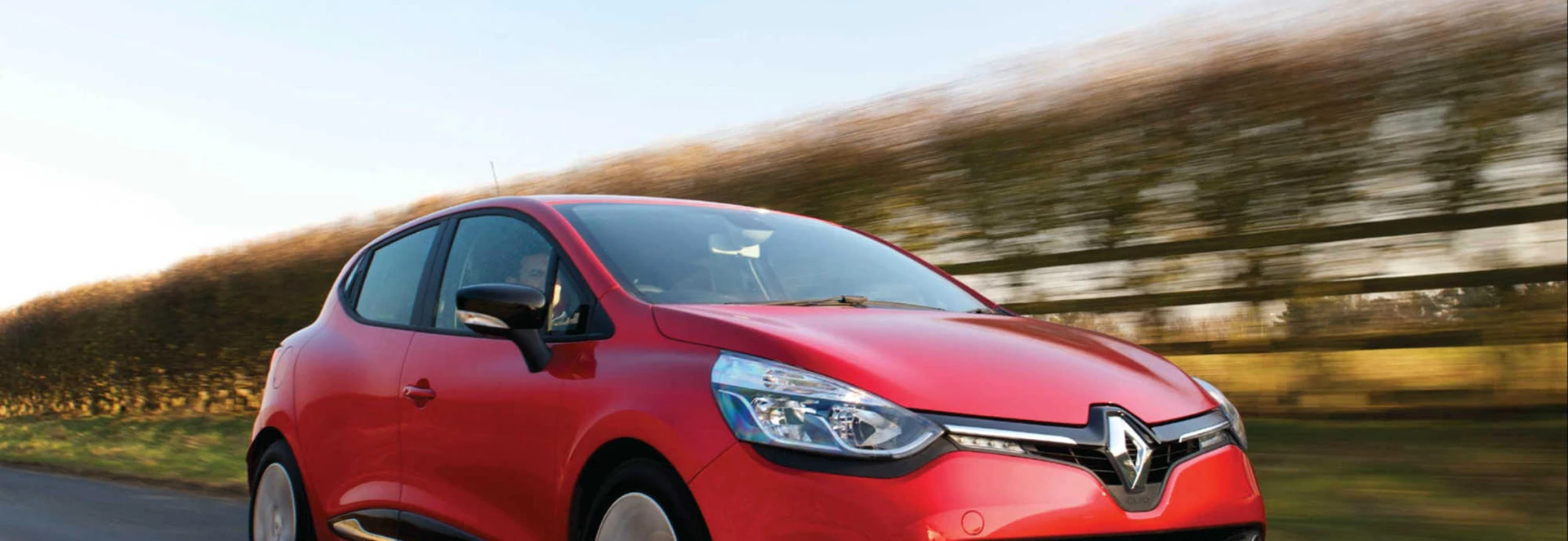Renault and Va va voom went hand-in-hand when the Clio had its angular rear-end - the last iteration lost its way on the design front and was rather, well how can we say it… bland. But the French designers have gone back to the drawing board, bringing the flair back.
This latest model has verve in spades thanks to a new large-badged front-end, angular headlights and shrunken flanks. It’s fair to say that Renault has tried to make its latest Clio more appealing to younger generations, with a range of personalisation options – including a choice of roof graphics - and a more techy, but cluster free, looking interior design.
After being around for almost 25 years, is it finally time for the Clio to push the Ford Fiesta off its lofty perch?
Performance
Following the example of many other superminis, the Clio is available with a small three-cylinder unit – an 89bhp 0.9-litre petrol.
Don’t be fooled by its size however, the 0.9-litre gives you more than enough power low down and although it takes 11.8 seconds to reach 62mph, it is much quicker than many rivals powered by three-cylinder 1.0-litre units. The majority average the same sprint in around 14 seconds.
Renault’s unit doesn’t quite match Ford’s turbocharged 1.0-litre EcoBoost for entertainment factor, and it also lacks necessary oomph when overtaking on the motorway.
If you are after something with a bit more power, then go for the torquier 1.5-litre diesel available. Although this diesel has the same 89bhp power output, it has much more pull to it and will serve you well when it comes to overtaking.
Ride and Handling
Body roll is almost non-existent, the suspension is supple and front-end grip is brilliant.
The fourth-generation Renault Clio shed 100kg when compared to its predecessor, making this car feel much livelier and agile when travelling through twisty B-roads. Dynamically, the Clio still isn’t up to Fiesta standards when it comes to fun, mainly due to its steering, which can feel a little unresponsive at times and a tad too light, especially if you want to drive it enthusiastically into corners. Its variable diving modes feel very artificial as well. On the plus side, body roll is almost non-existent, the suspension is supple and front-end grip is brilliant. It is a shame the steering isn’t weighted a little better, otherwise the Clio would be jostling for a class leading place, especially when you throw its impressive front-end grip into the mix.
Interior and Equipment
You can make the Clio’s engine sound like a motorbike from the speakers thanks to its new R-Link multimedia-system.
Inside the Clio there is a prominent feel of youthfulness about it, something of which all superminis try to offer nowadays. With that said however, there are a few toggles and switches, particularly on the steering wheel, that feel a little retro. Standard kit on every Clio is plentiful, with USB compatibility, Bluetooth and cruise control. Air-con, unfortunately, is nowhere to be seen until the second trim, Expression +. At the top of the range, Dynamic S MediaNav has things such as a leather wrapped steering wheel, automatic climate control and, arguably most importantly, Renault’s R-Link system. The R-Link system brings all of your media and connectivity features like sat-nav and Bluetooth into one place. It also gives you access to an R-Link app store, allowing you to download an app that can modify the sound of the engine through the interior speakers of the car. For me, leg room in the back of the Clio is quite limited and not up to the standards of other supermini competitors like the Fiesta. The boot on the other hand is very capacious, offering 300 litres with the seats in place - making it bigger than both the Ford Fiesta and Peugeot 208 - and 1,146 litres with the seats folded down – which is bigger than the VW Polo.
Cost
If you do get the sub 100g/km figure then you will avoid road tax - always a bonus – and it also claims to return an average of around 62mpg.
The three-cylinder 0.9-litre petrol carries CO2 emissions as low as 99g/km, although with the added kit of the flagship model, you are looking at 105g/km – so be careful. If you do get the sub 100g/km figure then you will avoid road tax - always a bonus – and it also claims to return an average of around 62mpg. The 1.5-litre diesel is the best choice when it comes to low running costs, returning a claimed average of around 83mpg and CO2 emissions of just 90g/km. The Renault Clio is quite pricy in comparison to its competition, standing around £1,000 more than its Fiesta and 208 competition. It is however slightly less than the Volkswagen Polo.
Our Verdict
The latest Clio model looks great and has the ability to tackle the growing, low-emitting supermini competition. Even from entry-level, the Clio is loaded with equipment and one of the most interesting systems available as an option is the Renault R-Link. This clever bit of kit should appeal to the younger generations. Driving dynamics are impressive, but not quite Fiesta impressive. Its price can be a little off-putting as well, with a £1,000 price bump over the Fiesta proving quite significant. Nevertheless, Renault has definitely built the Clio with more flair than ever before, with the best-selling Fiesta firmly in its radar.




